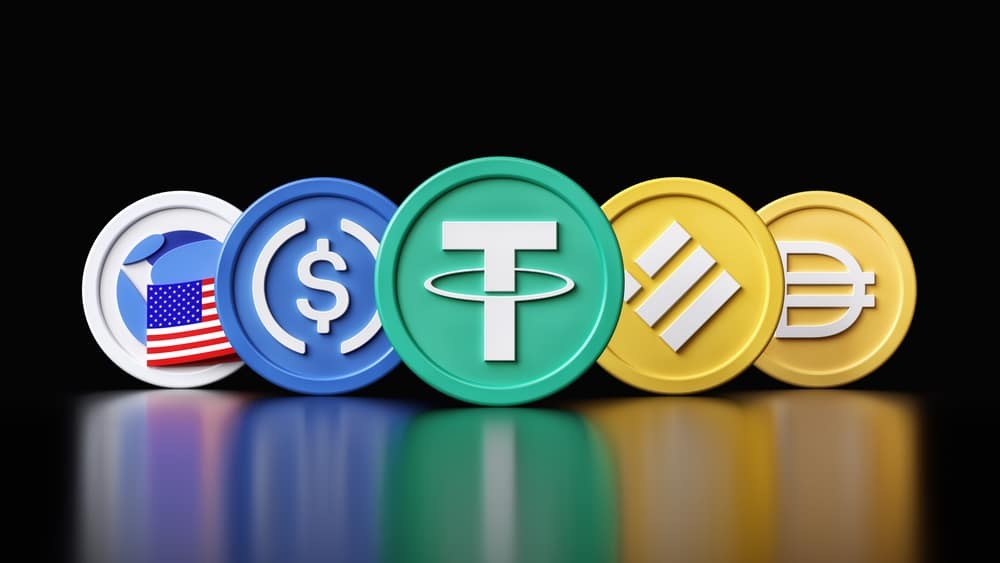
Stablecoin Adoption Threatens Emerging Markets and Developing Economies
FSB report decries the global stablecoins adoption poses financial risks and regulatory difficulties for emerging markets and developing economies.
A recent publication by the Financial Stability Board (FSB) warns that adopting global stablecoins (GSCs) presents considerable risks to emerging markets and developing economies (EMDEs). The report considers that adopting GSCs similarly poses regulatory challenges for the EMDEs.
In its July 23 report, the FSB highlights that reliance on foreign currency-pegged stablecoins across the EMDEs poses financial instability. Similarly, the FSB attributes the GSCs as aggravating the macro-financial risks.
GSCs Stablecoin Adoption Risk
GSCs adoption, especially those pegged to foreign currencies, is gaining huge utilization within the EMDEs jurisdictions. FSB considers the accelerated uptake of stablecoin due to limited access to conventional banking, currency volatility, and high remittance flows.
FSB considers the trend to be a concern for financial regulators. Most urge caution, illustrating that digital assets could destabilize financial systems. Potentially, mass adoption of the stablecoin could strain the country’s fiscal resources.
FSB cites the implosion and de-peg of stablecoins since the crypto-asset market turmoil began in Mid-2022. Such incidents of the potential fragility in the GSC highlight the potential fragility of stablecoins lacking in design adequacy and minimally regulated.
FSB decries that the instability inherent in digital currencies could pose enormous risks for EMDEs that often struggle with limited supervisory and regulatory capacities.
The report highlights vital concerns attributed to adopting GSCs in developing nations. FSB notes that EMDEs are vulnerable to illicit finance flows, data privacy issues, and cybersecurity threats, as well as the need to enhance investor and consumer protections.
Additionally, FSB warns that stablecoins can erode the market integrity and disrupt financial and macroeconomic stability. While the aforementioned risks are global, EMDEs face specific challenges that amplify the challenges of adopting effective regulatory solutions.
Inadequate Regulatory Framework
The case for adopting stablecoins as the alternative to fiat currencies is surprisingly strong. The update is fuelled by limited banking access and the pursuit of efficient remittance services. Also, the individuals desire to hedge and shield against the local currency instability.
To overcome the challenges highlighted as presented by stablecoins, the FSB report suggests that policymakers should work jointly with regulators to develop and deploy robust regulatory frameworks.
Such changes should prioritize enhancing the cross-border infrastructure for seamless regulatory cooperation. Simultaneously, the local agencies should nurture the capability to manage and supervise the GSC activities, thereby safeguarding financial stability.
Stablecoin Overview Today
The stablecoin segment, valued at $164.5 billion, is dominated by Tether USDT, with a market cap of $114 billion per CoinGecko data. USD Coin ranks second largest with a market cap of $34 billion. Alongside TrueUS (TUSD), USDT and USDC are the common US dollar-pegged stablecoins.
The USD-stablecoin dominates the segment, accounting for $158.092 billion in market cap and is involved in $37.468 billion. Still, Tether (USDT) commands the largest share in daily trade volume at $ $32.516 billion. CoinGecko data shows the fiat-backed stablecoins are dominant with a $152.395 billion cap and involved in $40.014 billion in daily trade volume.
Early this month, Paxos secured approval from the Singapore Central Bank, the Monetary Authority of Singapore (MAS). The approval allows the blockchain and tokenization platform to offer the gold-backed stablecoin identified as Pax Gold (PAXG).
Recent development by JD Technology saw its subsidiary Jingdong Coinlink reveal plans to issue the Hong Kong dollar-backed stablecoin. Such critical developments coincide with the European Union enacting a stablecoin regulatory framework on June 30.
The EU stablecoin law prompted many crypto exchanges to reveal the decision to delist the noncompliant stablecoins. Others have announced restricted services for the European Economic Area (EEA) and EU-based clients.
Notably, Binance is leading other established exchanges, including OKX, Kraken, and Uphold, in delisting USDT stablecoin. Recently, Bitstamp revealed a move to delist Euro Tether (EURT). Experts anticipate a shift to the euro-backed stablecoin, particularly when demand arises in the EU markets.




